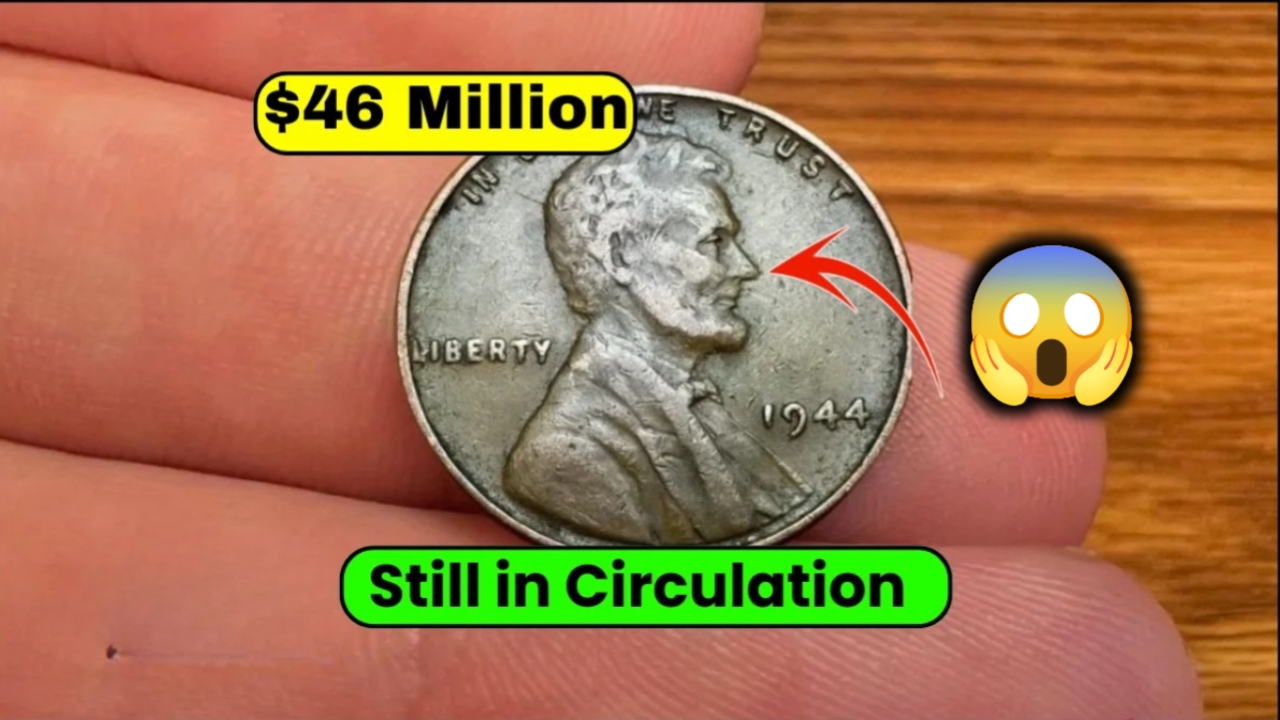The Lincoln Wheat Penny Valued at $46 Million, Still in Circulation
Be honest—how often do you actually look at the coins gathering dust in your drawers, tucked in car cup holders, or dropped into an old piggy bank? Most of us barely notice them. But imagine this: what if one of those ordinary-looking coins was secretly worth a jaw-dropping ₹380 crores (around $46 million)?
Sounds unbelievable? It’s not. There’s a rare coin out there—a Lincoln Wheat Penny—and someone might unknowingly have it in their change jar right now.
What’s the Lincoln Wheat Penny, and Why Is It So Valuable?
The Lincoln Wheat Penny was introduced in 1909 to mark the 100th anniversary of Abraham Lincoln’s birth, the 16th President of the United States. It was the first American coin to ever feature the portrait of a real person—instead of the traditional Lady Liberty design.
-
The coin was designed by artist Victor David Brenner.
-
Lincoln’s side profile appears on the front.
-
Two wheat stalks appear on the reverse, symbolizing growth and prosperity.
-
That’s how it earned the nickname “Wheat Penny.”
These coins were minted until 1958, after which the design changed to feature the Lincoln Memorial. While most Wheat Pennies are still worth just a single cent, some rare ones have become incredibly valuable.
How Can a Single Coin Be Worth $46 Million?
Not every Lincoln Wheat Penny is rare—but a few specific ones are considered ultra-valuable due to unique features like minting mistakes, limited production runs, or historical importance.
Here’s why collectors are willing to pay crores for them:
Minting Mistakes
Some coins were misprinted—showing double images, being slightly off-center, or struck using the wrong metal.
These so-called “error coins” are highly sought after in the collector’s world.
Scarcity
Certain years had a very limited number of coins produced, making them rare over time.
The rarer the coin, the higher the demand—and price.
The Famous 1943 Copper Penny
During World War II, the U.S. switched to making pennies from steel to save copper.
But by accident, a few copper blanks were still used in 1943. These rare coins are now considered the “Holy Grail” of pennies. Owning one is like winning the lottery!
Historical Relevance
Coins tied to major historical events, such as war or significant changes in coin design, tend to gain serious value with age.
Is the $46 Million Coin Still Out There?
It might sound wild, but yes—this coin could still be hiding in plain sight. Why?
-
Most people don’t check their change closely.
-
Valuable coins can be unknowingly used in everyday transactions.
-
Many are forgotten in savings jars, hidden in wallets, or stored in old boxes.
-
Some have even turned up at flea markets, garage sales, or in coin rolls from the bank.
So next time you’re holding spare change—take a second look. You never know!
How to Tell if Your Lincoln Wheat Penny Is Valuable
If you’re now tempted to go through your stash of coins, here’s what to check:
1. Check the Date and Mint Mark
Certain years and mint marks stand out:
-
1943 Copper Penny – If yours says 1943 and it’s made of copper (not steel), it could be worth millions.
-
1909-S VDB Penny – The first coin in the series, featuring the initials of its designer (V.D.B.).
-
1944 Steel Penny – An accidental production run in steel when copper was meant to be used.
2. Try the Magnet Test
Steel pennies from 1943 will stick to a magnet.
If your 1943 coin doesn’t stick—it could be the rare copper version!
3. Check the Condition
Mint-condition coins (ones that look brand new) are far more valuable.
Heavily circulated coins with lots of wear and tear are worth less—even if rare.
4. Look for Unusual Features
Check for doubled letters, typos, or mint mark errors.
These minor oddities can significantly increase the coin’s value.
Found Something Rare? Here’s What to Do Next
Don’t Clean the Coin!
Avoid polishing or scrubbing.
Cleaning can ruin the coin’s surface and reduce its value.
Do Some Research
Use trusted websites and coin collector forums to compare your coin.
Get It Authenticated
Reach out to expert grading services like:
-
PCGS (Professional Coin Grading Service)
-
NGC (Numismatic Guaranty Corporation)
They can certify the coin’s authenticity and estimate its value.
Sell Smart
If it’s genuine and rare, consider selling it through a well-known auction house or coin specialist—not on random online platforms.
Conclusion
It might sound like a dream, but plenty of people have stumbled across life-changing coins in ordinary places.
So next time you dump your change on the counter, or clean out an old drawer—take a moment and check. That shiny copper penny could be your golden ticket to millions.
Start searching—because luck sometimes hides in the smallest places.
FAQs
Q1. Is there really a Lincoln Wheat Penny worth $46 million?
A: Yes, according to reports, one exceptionally rare Lincoln Wheat Penny is valued at $46 million due to its rarity, historical background, and pristine condition.
Q2. What makes the coin so special?
A: Its value comes from several rare features—minting errors, ultra-limited production, and perfect preservation—making it a collector’s dream.
Q3. Could this rare coin still be in circulation?
A: Yes, experts believe it’s possible one or more of these coins were never pulled from circulation, meaning they could still turn up in someone’s loose change.
Q4. How do I know if my Lincoln Penny is valuable?
A: Look at the date, mint mark, metal type, and any visible errors. Some valuable versions include the 1943 copper penny, 1909-S VDB, and 1955 doubled die.
Q5. Which years are most valuable in Wheat Pennies?
A: Focus on coins made between 1909 and 1958. Key years like 1909-S, 1914-D, 1944 steel, and others can be worth a fortune if well-preserved.




